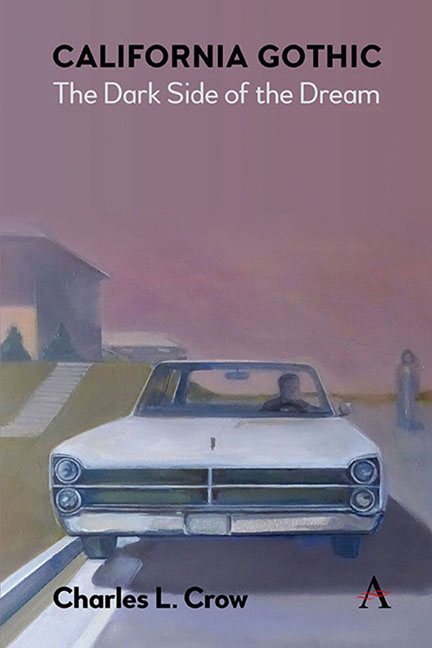Book contents
- Frontmatter
- Dedication
- Contents
- List of Figures
- Preface
- Acknowledgements
- 1 The Magic Island
- 2 Ambrose Bierce and San Francisco’s Gothic Frontier
- 3 Lost Coasts
- 4 Disease, Pandemics, and the Monstrous
- 5 The Shadow Line: Noir and California Gothic
- 6 California Ecogothic: What’s Buried in the Basement
- Works Cited
- Afterword
- Index
3 - Lost Coasts
Published online by Cambridge University Press: 27 March 2024
- Frontmatter
- Dedication
- Contents
- List of Figures
- Preface
- Acknowledgements
- 1 The Magic Island
- 2 Ambrose Bierce and San Francisco’s Gothic Frontier
- 3 Lost Coasts
- 4 Disease, Pandemics, and the Monstrous
- 5 The Shadow Line: Noir and California Gothic
- 6 California Ecogothic: What’s Buried in the Basement
- Works Cited
- Afterword
- Index
Summary
This coast, crying out for tragedy like all beautiful places …
—Robinson Jeffers, “Apology for Bad Dreams”Whatever we make here, whatever find, We cannot leave behind.
—Josephine Miles, “After This, Sea”California’s bohemians, beats, or hippies—as the name has changed over the decades—have sought refuge, enlightenment, or community among the forests and surf of the central and north coasts since the early twentieth century. This chapter follows these dreamers from the Carmel colony and the rugged Big Sur to the remote area known as the Lost Coast. Their stories were shaped into Gothic narratives by writers as diverse as John Steinbeck, Thomas Pynchon, Denis Johnson, and Kem Nunn.
Et in Arcadia Ego
The Carmel artist colony produced few works of Gothic literature, if we discount the weird longer poems of George Sterling, which I consider to be dreadful. But the history of this tribe is itself a Gothic story and is the prototype of many stories of wrecked illusions in the coastal California landscape.
The community began as an outpost of the vigorous bohemian culture of San Francisco. The ideas of John Muir were in the air, and the great San Francisco earthquake of 1906 was a further incentive to escape the metropolis. The first bohemian pioneers in Carmel built cabins in the idiom of the emerging Bay Area regional tradition, developed by architects like A. Page Brown and Bernard Maybeck, that stressed a connection with the landscape and use of local materials, as described by architectural historians Freudenheim and Sussman. The poet George Sterling’s cabin featured a 30 by 18-foot living room finished in oiled redwood and a massive fireplace and chimney built of chalk rock he hauled himself from the Carmel Valley. The photographer Arnold Genthe built a cabin with a huge combination studio and living room, with massive roof beams supported by redwood trunks with the bark left on. Never to be upstaged in the back-to-nature department, Mary Austin, already celebrated for The Land of Little Rain (1903), built a treehouse, which she called a wik-i-up, as a writer’s studio, and often could be glimpsed walking through the forest dressed in flowing Grecian robes, or the fringed and beaded dress of an Indian princess.
At the center of the Carmelites, master of their revels, was George Sterling (Fig. 3.1). Now nearly forgotten, Sterling once seemed the most promising poet of the Pacific Coast.
- Type
- Chapter
- Information
- California GothicThe Dark Side of the Dream, pp. 19 - 34Publisher: Anthem PressPrint publication year: 2024

